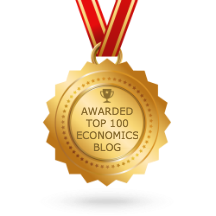Economist J.C. Bradbury warns that taxpayers will likely be on the hook for the pricy facility. It’s already happened in similar deals across the nation, he said.
By Michael Karlis of The San Antonio Current. Excerpts:
"Kennesaw State University economics professor J.C. Bradbury said the fallout from similar deals around the country suggests local taxpayers may end up footing much of the bill for the proposed $1.3 billion arena — likely with money from the city’s general fund.
“San Antonio already built the Spurs a brand new arena. It’s not even 30 years old, and it was refurbished a decade ago,” Bradbury said of the Frost Bank Center, the NBA team’s current home."
"the Frost Bank Center, which opened in 2002, is the 12th-newest arena in the league."
"New sports facilities with high-tech amenities tend to see upswings in attendance due to fan excitement, but it often wears off over time, the economist said. The other revenue boost comes from adding additional luxury boxes and premium seating.
“It’s called the novelty effect, and the novelty effect results in elevated revenues for teams for about 10 years after a new venue opens,” Bradbury added.
Although Bradbury speculates the Spurs are looking a financial shot in the arm, it’s worth noting that the Silver and Black are among the league’s most profitable small-market teams. The franchise raked in an estimated $363 million during the 2023-24 season"
"Once upon a time, municipalities arranged public financing for sports facilities through a single sales tax increase — such as a gas tax — or via property tax revenue, Bradbury said. However, as public support for those methods eroded, team owners and city managers have been forced to get increasingly creative with public financing.
Many of those new deals come with elevated risk, Bradbury said.
In a funding proposal such as the one assembled in San Antonio, the projected revenue from various streams often fails to meet expectations, leaving taxpayers on the hook, the professor added.
“This happens quite a bit,” Bradbury said. “At the end of the day, if there’s a full-faith and credit requirement, which will likely be the case in this deal, then the taxpayers are on the hook. So, if there’s not enough money in tourism, well then, some money can come out of your property taxes. And then they’ll say, ‘Oh, well, nobody could have foreseen this.’ Even though this happens every single time.”
Indeed, international tourism is down already 8.2% this year nationwide. Meanwhile, San Antonio business owners recently told the Current that service and hospitality revenues are down as much as 15% in recent months.
Bradbury points to a stadium deal gone awry in Worcester, Massachusetts, as a stark warning to taxpayers. That Boston suburb used a similar tax-revenue mechanism to pay for a minor-league baseball stadium. However, when expected revenue didn’t materialize, the City of Worcester was forced to dip into public funds to make the debt payments."
See also Economic growth hasn’t happened around Alamodome or Frost Bank Center by San Antonio economist Chris Baecker. Excerpt:
"Many San Antonians lament the fact that less-populated cities have more professional sports teams. Some of our leaders and the press cite Charlotte, N.C.; Nashville, Tenn.; Las Vegas; Oklahoma City; San Diego; and Seattle.
The reason is that those cites have higher income and GDP per capita. Four of them rank in the top 35 nationally. We rank 187th.
What we don’t hear about is that our municipal debt, well more than twice the national average by some accounts, is three times as much as what Oklahoma City carries by other accounts. The same goes for the subsequent per taxpayer burden.
I understand that frustration. I also understand why those whose policies have led us to this point have resorted to, among other things, fear tactics.
Former San Antonio Mayor Henry Cisneros claims voting down Proposition B will “create a downward spiral” that would “introduce doubt among employers, national firms and investors.” Again, consumption follows production, not the other way around.
Plus, the businesses that are here have been decreasing their presence, if not leaving altogether.
There’s also the matter that the Alamodome, which Cisneros spearheaded, didn’t get a regular tenant for its intended sport for almost 20 years — The University of Texas at San Antonio football, my alma mater.
That’s also about how long it took for the dome to turn a profit, reducing its burden on taxpayers."
See also Forgotten article where Spurs promise development on San Antonio’s East Side recirculates on social media: The 2002 article, which also acknowledges the failures of the Alamodome, has eerie similarities to the promises being made about Project Marvel by Michael Karlis of The San Antonio Current.
Related posts:
The economic impact of the Super Bowl is met with skepticism from economists (2024)
Economic benefits from mega-events like the Olympics are often overstated (2021)
Striking out: estimating the economic impact of baseball's World Series (2021)
As Covid-19 Closes Stadiums, Municipalities Struggle With Billions in Debt (2020)
The San Antonio Spurs And Federal Subsidies (2016) (The Spurs received $41 million in federal subsidies to build the AT&T Center with little economic gain for the community-multiple studies show major private sports stadiums don’t ultimately produce substantial economic growth relative to the government incentives they receive)
Even If You Don't Like Sports, You Might Be Paying For Them (2011)
Does It Pay to Host the Olympics? (2009)
What Economists Say About "March Madness" (2009)
Sports, Economics and Politics Collide When Government Officials Get World Series Tickets (2009)
New York City Tax Payers To Pay $1 Billion To See Baseball (2008)

No comments:
Post a Comment